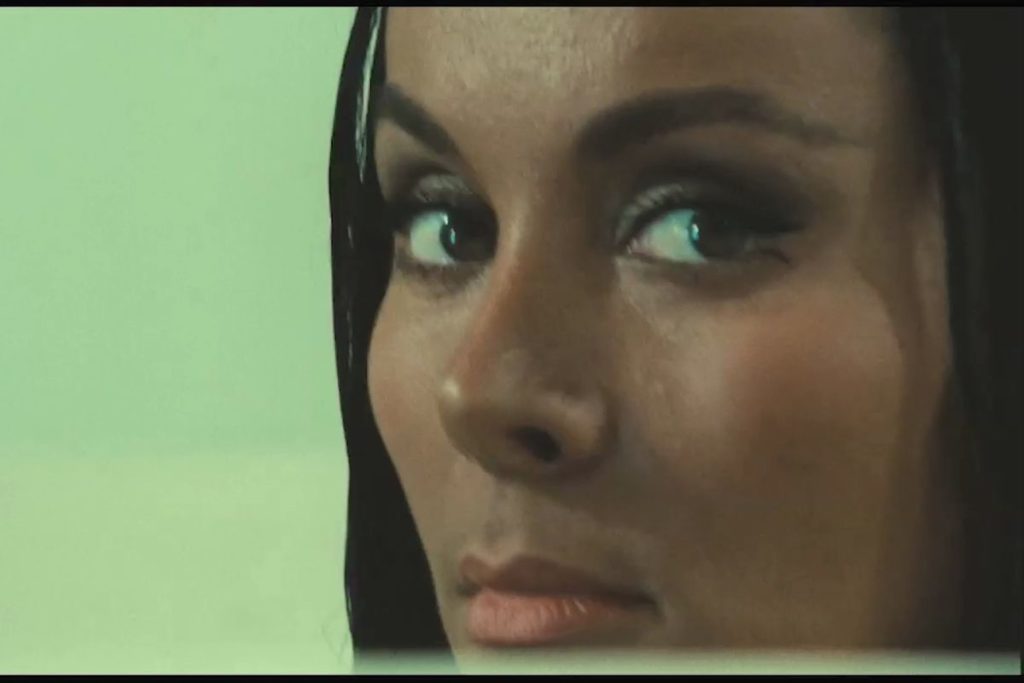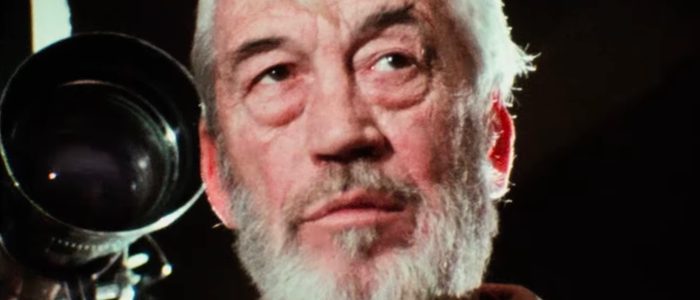Orson Welles’ Final Film is Frustrating and Befuddling- And We’re Lucky to Have It
Directed by Orson Welles / 2018
 The journey The Other Side of the Wind took to get to Netflix is nothing short of remarkable. Orson Welles (yes, that Orson Welles) began gestating the project in 1961, as a sort of portrait of a Hemingway-esque character. Over the next decade he would reshape and refine his ideas about the film- all the while scrambling to raise money for its production. In 1970, Welles returned to the United States, after having spent the previous two decades in Europe, and work on the film actually began. The lead character was now a film director with a coterie of devoted followers, and the film would be a document of that director’s last day on Earth.
The journey The Other Side of the Wind took to get to Netflix is nothing short of remarkable. Orson Welles (yes, that Orson Welles) began gestating the project in 1961, as a sort of portrait of a Hemingway-esque character. Over the next decade he would reshape and refine his ideas about the film- all the while scrambling to raise money for its production. In 1970, Welles returned to the United States, after having spent the previous two decades in Europe, and work on the film actually began. The lead character was now a film director with a coterie of devoted followers, and the film would be a document of that director’s last day on Earth.
Throughout production the film continued to be beset with all manner of troubles. Welles was hit with a surprise tax bill, and he had to suspend production in order to earn money to pay that off. One of his investors ran off with most of the movie’s initial budget, necessitating a new round of fundraising. His first choice to play Brooks Otterlake, the impressionist Rich Little, sudden left the picture (accounts vary as to why), and his scenes all had to be reshot with director Peter Bogdanovich (The Last Picture Show) taking the part. This then meant that all the scenes Bogdanovich had previously shot as a different character needed to be reshot. As a result of all of these problems and many more, the film’s shoot stretched on for years. Due to the long production, various cast and crew members came and went, making for further delays and disrupting Welles’ plans for the movie. Principle photography wasn’t complete until 1976.

But, gentle reader, if you think Welles’ problems ended there, you’d be mistaken. Welles would work on editing the footage in his spare time over the next three years. He completed about 40 minutes of the film, but then the movie would get caught up in complicated legal disputes that shut things down again- including claims over ownership by the new, revolutionary government of Iran! These issues were exacerbated by Welles’ death in 1985, as disputes over his estate, personal animosity between his heirs, and claims by various investors drug out legal proceedings for the next fifteen years. Throughout all of this, the negative remained locked in a Paris vault, and only a few rough workprints were shown around Hollywood in an effort to secure help in finishing the film.
The final product, however, feels like a weird patchwork of tones and ideas
Starting in 1998, however, the issues regarding the film’s ownership were slowly cleaned up, and work began in earnest to complete and release the film in as close to the form that Welles intended. Bogdanovich has been spearheading these efforts since 2004 and was finally given access to the original negative. Money for completion continued to be hard won- a crowd-sourcing campaign wasn’t nearly as successful as hoped, and other investors proved to be elusive. But Bogdanovich and producer Frank Marshall (who was also an initial investor in the movie) continued their work as best they could- following notes Welles left behind and using his edited footage as a template for their own work. In 2016, it was announced that the streaming giant Netflix stepped in and paid for not only the completion of the film, but a companion documentary as well (They’ll Love Me When I’m Dead, arriving on the site alongside Welles’ movie). The Other Side of the Wind was finished, and made its premier in 2018 at the Venice Film Festival. Netflix released it on its platform on November 2nd. Welles’ last movie took an astonishing 48 years from start of production to its final release- an amazing and complicated journey. Welles is one of cinema’s uncontested geniuses- a man who has had an outsized influence on the history and development of the medium as a art form- especially in light of his relatively small output. It’s almost a miracle we got to see the final movie from him, in any form, at all.
And… I kinda hate it.
There’s no doubt in my mind that the film we see on Netflix, although it was completed by other hands nearly 20 years following Welles’ death, is close to the film that Welles had envisioned- or at least close to a film Welles could have certainly ended up with at the end of post-production. And I can appreciate what, I think, the style he was going for, constrained as he was by lack of money and uncertain scheduling. Welles decided that the film was to be mostly improvised, and shot on multiple handheld cameras shooting different types of film stock in a sort of ‘mockumentary’ style.

The final product, however, feels like a weird patchwork of tones and ideas. Maybe given sufficient time and money to finish the movie back in the 70’s, Welles might have been able to fashion a more coherent film out of his footage- especially if afforded opportunities for pickup shots and reshoots that could’ve brought a better sense of unity to the film. But it was not to be. What we have ended up with is a fascinating historical document- even the rough workprints were enough to influence filmmakers like Clint Eastwood (see: White Hunter, Black Heart) and Oliver Stone (see: Natural Born Killers). But as a movie it doesn’t work. It can’t decide whether it wants to play as farce, straight drama, satire, neorealism, absurdism or experimentalism. The movie shifts tones from one scene to the next, and sometimes even within scenes. There’s no doubt a fascinating look at an artist at the end of his tether in the midst of all the hours of footage Welles shot. He just never settled on the manner in which he was going to tell that story and so he tells it every which way at once.
All we’re left with is this approximation of what might have been
Welles intended the movie-within-a-movie (also named The Other Side of the Wind) to be a satire of contemporary arthouse cinema. It doesn’t read that way, unfortunately. There’s an awful lot of screen time devoted to these scenes of two characters chasing after one another- oftentime completely nude, but there never seems to be any real point to it. It’s not funny enough to read as parody, it’s too nonsensical to be taken seriously, and it goes on for far too long to be interesting. There are some stunning shots, where Welles performs some impressive camera tricks with mirrors and reflections, but that’s all these sequences really have to offer.
If Welles had more time with The Other Side of the Wind, he probably could’ve shaped it into… well, if not a masterpiece, then at least something more than what we were left with. Circumstances beyond his control took the film away from him when he was just getting started on it, and then Welles was taken from us. The Other Side of the Wind as we have it today is not the movie Welles would’ve delivered. Given his penchant for completely altering his intentions in the editing room, it might’ve turned into something quite different. Or maybe it would’ve ended up anyway on the long list of projects that Welles never finished for one reason or another. The Other Side of the Wind is a huge stylistic departure for Welles, and I don’t think he got it quite right the first time. If he had the chance to try again, maybe…? But he didn’t get his chance, and all we’re left with is this approximation of what might have been. Still, this movie is now available to us, even in this rough form. His final film, about a once-revered director’s final film, has been released, and the world has been blessed with one last Orson Welles film.

